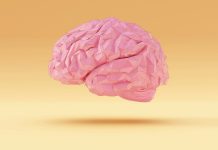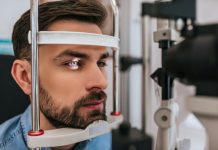
Parkinson’s disease and Lewy Body Dementia (LBD) are debilitating neurodegenerative conditions affecting millions in the United States.
Both disorders are characterized by the loss of dopamine-producing brain cells, leading to movement difficulties, tremors, and, in later stages, memory problems.
While these diseases have been studied extensively, recent research from Scripps Research has unearthed new insights into their origins and progression.
The Hidden Culprits: Nitrogen Molecules and Protein Aggregates
Scientists have long known that Parkinson’s disease and LBD involve the production of highly reactive nitrogen molecules, including nitric oxide.
These molecules can disrupt a crucial cellular system known as autophagy, responsible for maintaining cell health by eliminating harmful protein aggregates.
In these neurodegenerative diseases, the focus is on a specific protein called alpha-synuclein.
In healthy cells, this protein is efficiently cleared away, but in individuals with Parkinson’s and LBD, it accumulates in sticky clumps, leading to damage to brain cells.
The Guardian of Cellular Health: p62
Central to this process is the protein p62. Ordinarily, p62 facilitates autophagy, aiding in the removal of potentially harmful protein aggregates.
However, in cell and animal models of Parkinson’s, the research uncovered that p62 undergoes a modification known as S-nitrosylation due to high levels of nitrogen molecules.
This modification hampers the functionality of p62, resulting in the buildup of detrimental alpha-synuclein aggregates within cells.
The Domino Effect: Spread of Harmful Aggregates
The accumulation of alpha-synuclein aggregates within a single brain cell marks only the beginning.
These aggregates can be released from the cell and taken up by neighboring neurons, perpetuating the disease’s spread throughout the brain.
This pattern mirrors the progression of Parkinson’s and LBD, indicating that the modification of p62 might be a pivotal factor in a chain reaction, instigating stress in individual brain cells and propagating it to others.
The discovery of the role of p62 in these diseases opens up a promising avenue for treatment. Preventing the S-nitrosylation of p62 could potentially halt the buildup and spread of harmful alpha-synuclein aggregates in the brain.
This novel approach offers hope for more effective treatments or even prevention strategies for Parkinson’s disease and LBD.
Further research into the potential benefits of vitamins E and D in preventing and treating Parkinson’s disease provides additional avenues for investigation.
Understanding these discoveries not only enhances our comprehension of brain health but also paves the way for innovative therapeutic approaches that may alleviate the suffering of those afflicted by these neurodegenerative disorders.
Conclusion
Parkinson’s disease and Lewy Body Dementia present immense challenges to individuals and their families.
While these conditions remain complex and enigmatic, recent research into the role of nitrogen molecules and protein aggregates, as well as the impact on the protein p62, brings us closer to unraveling their underlying mechanisms.
These discoveries offer hope for future treatments that could transform the lives of those affected by Parkinson’s disease and LBD.
If you care about Parkinson’s disease, please read studies about Vitamin E that may help prevent Parkinson’s disease, and Vitamin D could benefit people with Parkinson’s disease.
For more information about brain health, please see recent studies about new way to treat Parkinson’s disease, and results showing COVID-19 may be linked to Parkinson’s disease.
Follow us on Twitter for more articles about this topic.
Copyright © 2023 Knowridge Science Report. All rights reserved.



